Art Fairs
Tens of Thousands of Artworks Have Debuted at Art Basel Miami Beach Over the Past 20 Years. Here Are 11 of the Most Memorable
We said memorable—we didn’t say good.
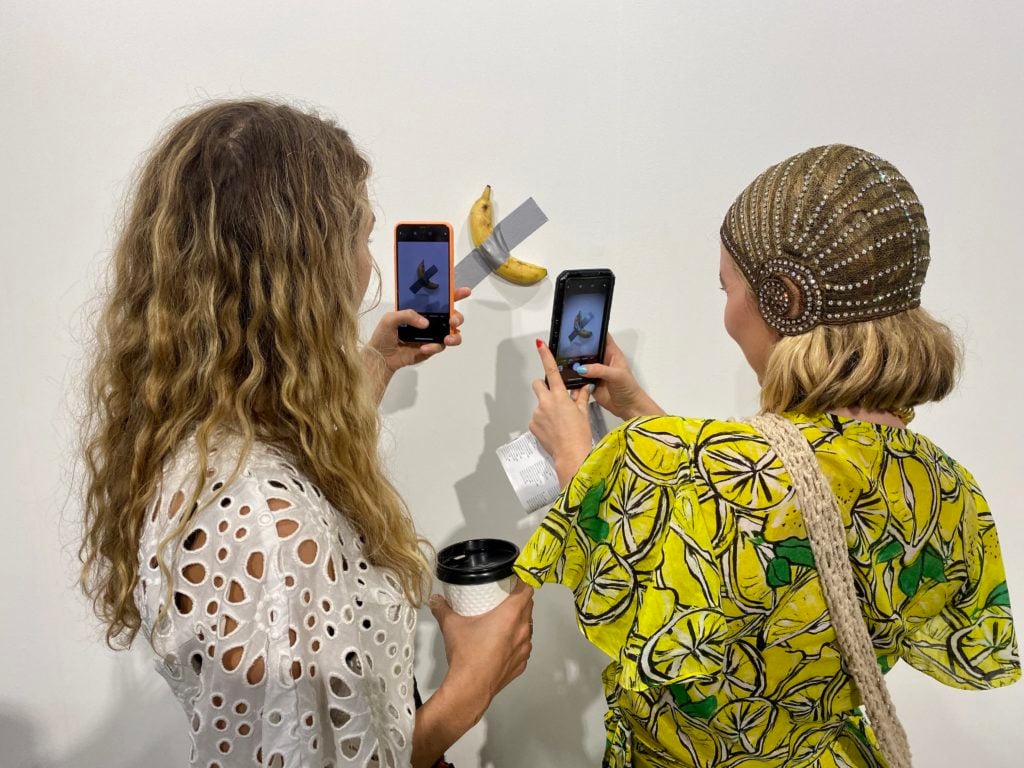
We said memorable—we didn’t say good.

Janelle Zara

This year marks the 20th anniversary of Art Basel’s arrival on Miami’s shores. A small but diligent community of local collectors—among them the Bramans, the Rubells, and Craig Robinson—had convinced both fair and city officials that Miami Beach was the next stop on the art-world circuit, the ideal meeting place between the markets of Europe and the Americas. Their efforts paid off when the first Art Basel Miami Beach opened in 2002 with 160 exhibitors and 30,000 visitors, and the numbers have only ballooned since. On December 1, it returns with 282 exhibitors, and upwards of 70,000 guests are expected to come through the Miami Convention Center doors during its run.
Over the course of those 20 years, ABMB has evolved into a gargantuan force, distinguished by both high-volume, high-priced art sales and spectacular hedonism. Through countless satellite events, close celebrity encounters, flash floods, and hangovers, the fair scaffolded the growth of Miami’s cultural landscape, even as detractors annually maligned the scene (and, appallingly, the city) for allegedly having too many parties, too many looky-loos, too many abject displays of wealth—essentially, all the features that transcend the boundaries of the art world to place ABMB in the broader realm of popular culture. No art fair in the world is as breathlessly chronicled by Page Six.
Love it or hate it, the December fair also serves as the art world’s annual review, providing a capsule of that year’s market and societal currents. Below is a list of 11 memorable ABMB works that capture a specific point in time: the obscure beginnings of well-loved artists; the whims of a frothy market; political anxieties, viral sensations and more.. While some are good, others are great, and a few are exceptionally bad, all of them, for better or worse, are difficult to forget.
Here they are, in chronological order.
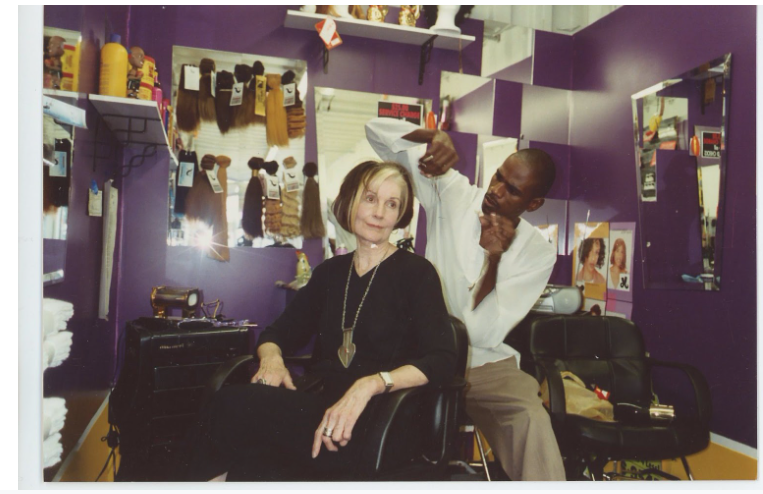
Jane Lombard and artist Mark Bradford in Bradford’s installation, Foxyé Hair, 2002. Lombard Freid Projects at Art Basel Miami Beach. Image courtesy of Jane Lombard.
It cost only $5,000 for galleries to participate in the fair’s inaugural Art Positions, a sector dedicated to young galleries and emerging artists. The catch: the booths were actually off-site shipping containers, with no protection from the heat. A young Bradford transformed Lombard-Freid’s container into his mother’s L.A. salon, where he was still doing hair and sourcing beauty supplies central to his collages at the time. She and his aunt joined him in Miami, where the three spent the fair doing braids and extensions. The cost? “Just tips,” the artist told the L.A. Times.
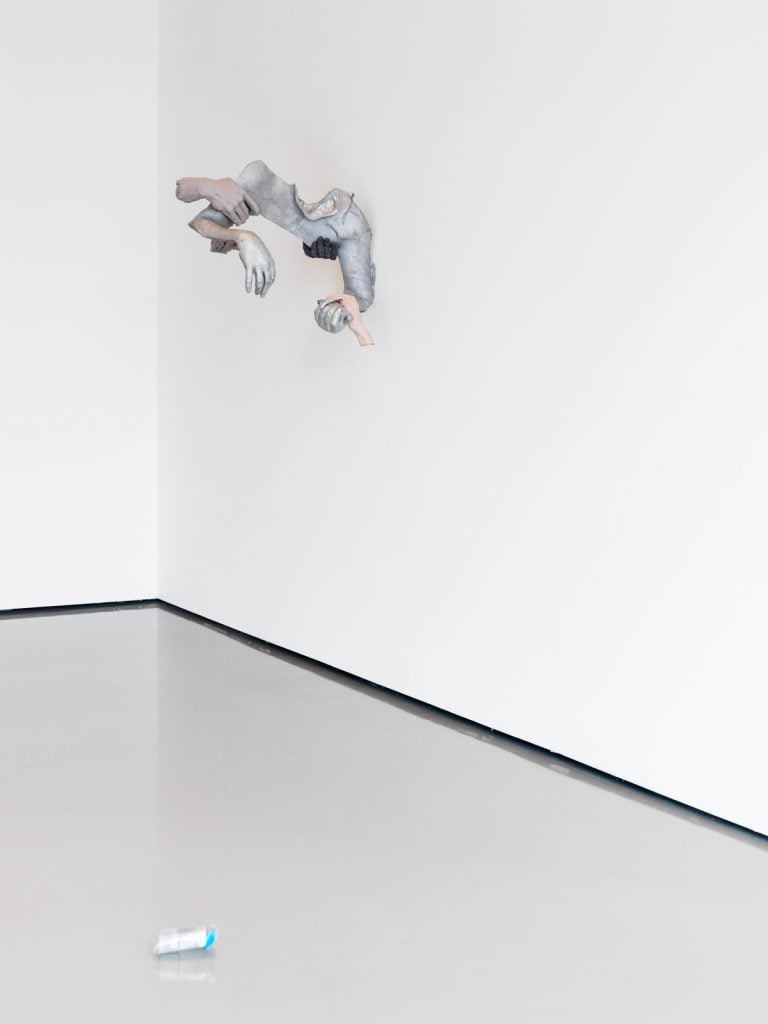
Urs Fischer, Nach Jugendstiel kam Roccoko, 20 in “Madame Fisscher,” at the Palazzo Grassi, Venice, Italy, 2012. © Urs Fischer. Courtesy of the artist. Photo: Stefan Altenburger.
The ingredients were simple: a crushed cigarette pack, strung up to a motor, skittering across the floor of a nearly-empty booth. Fischer’s kinetic sculpture drew crowds, sold as an edition of two for $160,000 each, and quickly became the talk of the fair. For the late critic Peter Schjeldahl, “This squandering of prime showroom real estate on the trashed container of an addictive product was a smart insult to the occasion,” he wrote—albeit “an awfully mild one.” In retrospect, the stunt became a symbol of pre-recession headiness. Such a move “would almost be a little bit too cocky now,” Gavin Brown surmised in 2018, lamenting the death of “cocky poetry” at art fairs.
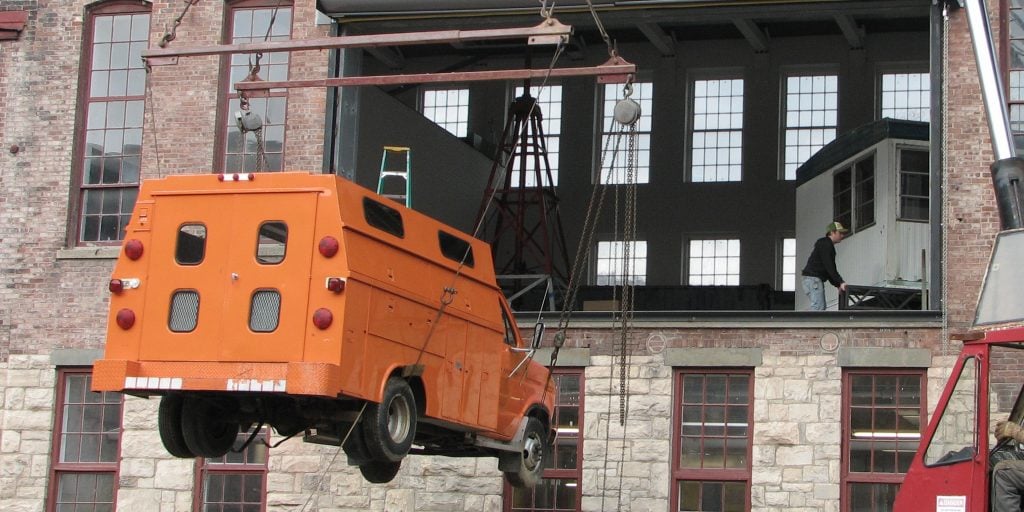
Christoph Büchel, A Training Ground for Democracy (2007) being installed at MASS MoCA. Courtesy of the museum.
The booth-sized dystopian polling station, enclosed in a chain link fence and festooned with American flags, was a smaller version of a notorious, unfinished project at the heart of a lawsuit brought against the artist by Mass MoCA. The high-profile case questioned a museum’s right to show incomplete work when an artist runs over budget and behind schedule; Büchel lost, appealed, then won. He also turned his heated email exchanges with the museum into art, available in Maccarone’s booth nearby, and Training Ground sold to Swiss collector Friedrich Christian Flick for $250,000.
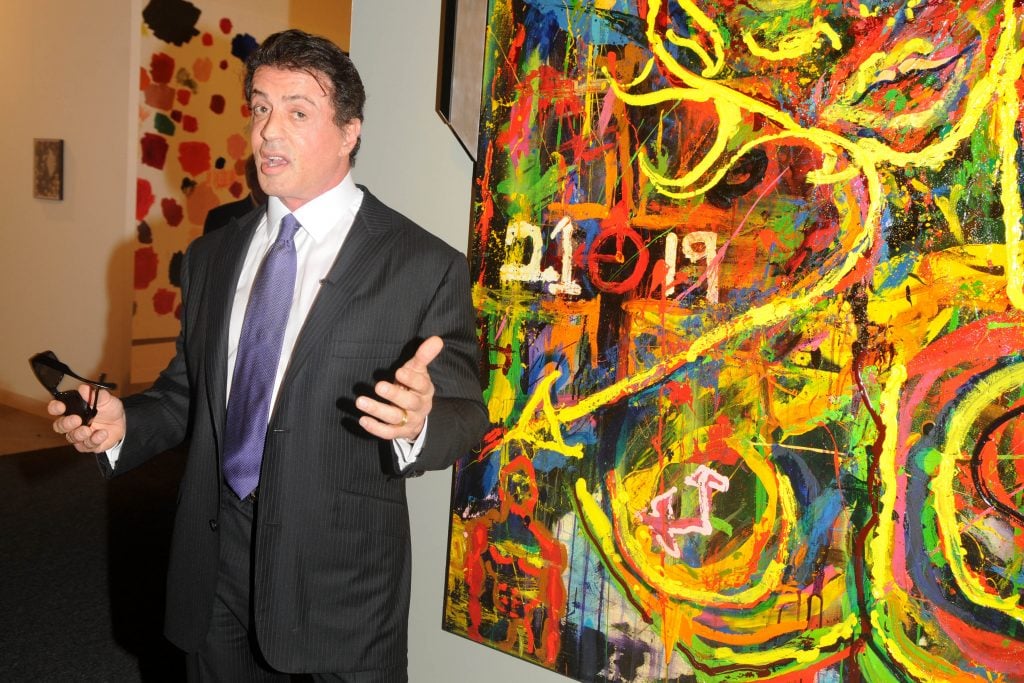
Sylvester Stallone with his artwork on December 2, 2009 in Miami Beach, Florida. (Photo by Clint Spaulding/Patrick McMullan via Getty Images)
Miami platforms emerging artists of all kinds. Painter Adrien Brody. Sculptor Miley Cyrus. And perhaps most successfully, abstract expressionist Sylvester Stallone. “His swirls of paint engulf the viewer in the same way Jackson Pollock’s drips do,” read a statement from Gmurzynska, which debuted Stallone’s paintings in its 2009 Miami booth. At least two pieces “priced at $40,000 to $50,000” went to Las Vegas hotelier Steve Wynn, according to the L.A. Times. Those successful sales led to a Zurich retrospective at the gallery two years later.

Visitors participating in Marina Abramovic performance at Art Basel in Miami Beach. Photo: Ben Davis
For a brief moment in time, a Marina Abramović Institute was slated to open in upstate New York and bring the famed Abramovic Method to the world. The dissolution of those plans in 2017 marked the end of the artist’s rigorous promotional campaign, which included international solo exhibitions, an Adidas collaboration, and a trio of performances in Miami Beach in 2014. Inside the Convention Center, the Basel-based museum hosted Abramović’s to installation of cots and noise-canceling headphones, offering visitors “sleep with no time restriction,” a welcome antidote to fair mania.
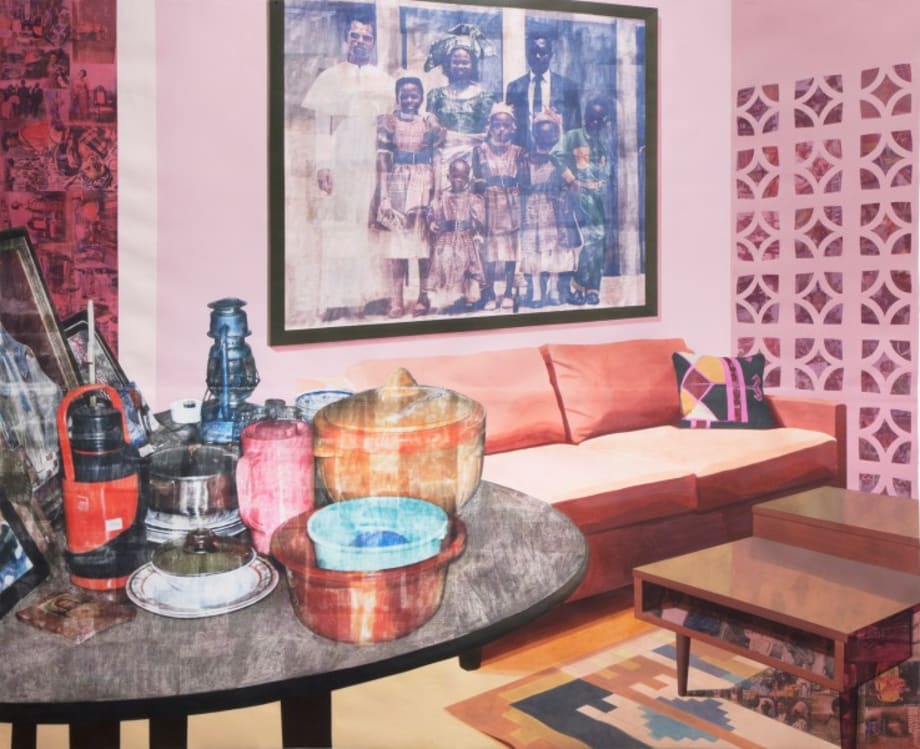
Njideka Akunyili Crosby, Sunday Morning (2014). Courtesy of Art Basel.
Just after signing with Victoria Miro, Akunyili Crosby’s ABMB debut immediately triggered fierce competition among collectors. Her depictions of quotidian Nigerian and American life, distinguished both by their tenderness and razor-shop execution, presented a “refreshing riposte to the anodyne, forgettable abstraction known as Zombie Formalism” then dominating the market, Charlotte Burns wrote. Five institutions vied for the 1960s-style interior; it ultimately went to Cape Town’s Zeitz Museum of Contemporary Art Africa for nearly $50,000. The success foreshadowed both Akunyili Crosby’s stardom and the shift to figuration that would define the market in the years to come.
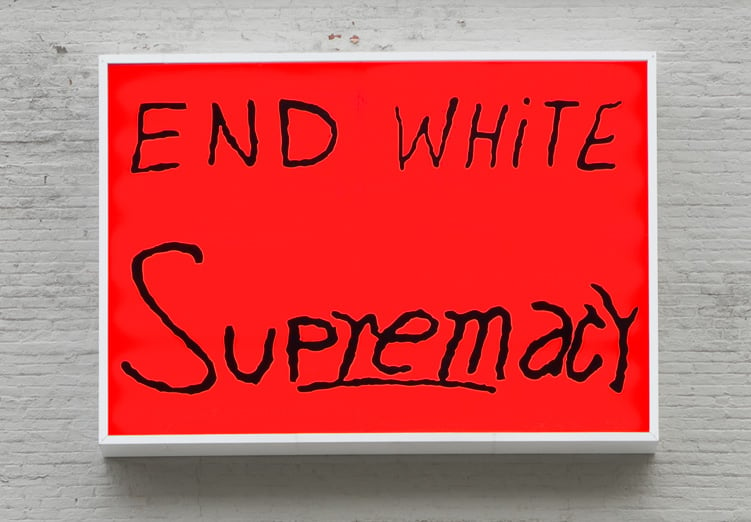
Sam Durant, End White Supremacy (2008) © Sam Durant. Courtesy Paula Cooper Gallery, New York
In 2011, critic Walter Robinson noted a curious development: fairgoers were using their iPhones to take and share photos of work. That function eventually evolved into something called “social media,” and in 2016, Durant’s lightbox of text pulled from a handwritten, 1960s protest sign dominated Instagram. The air weighed heavily that year with the fear and uncertainty following the U.S. presidential election, and for many, quoting a simple message (one that seemed bold, rather than obvious at the time) was the most convenient political gesture one could muster from inside an art fair.
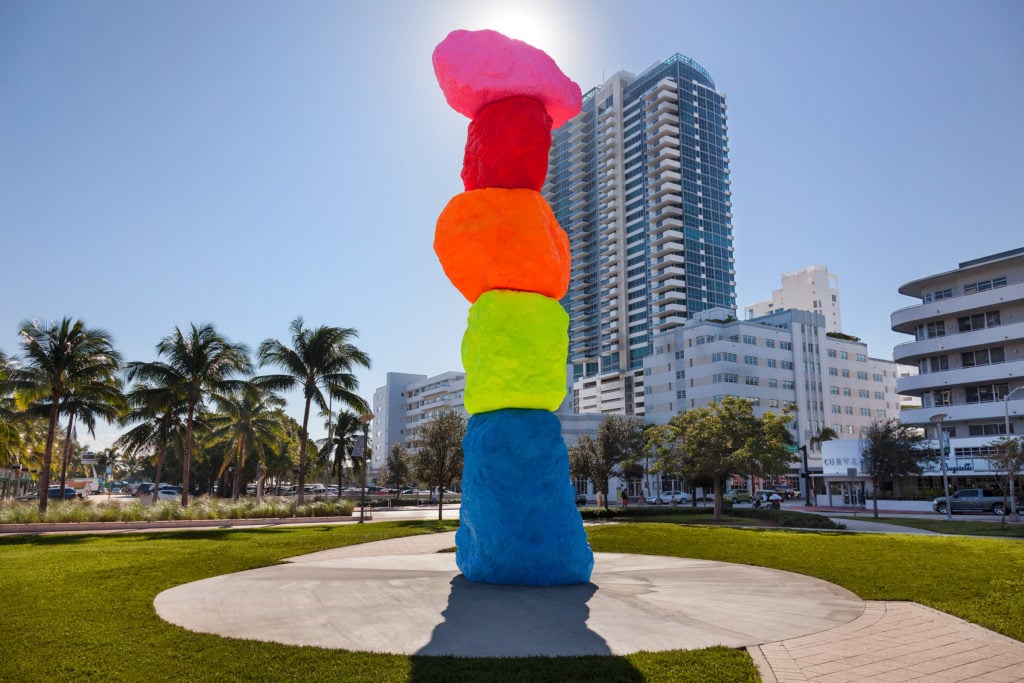
Ugo Rondinone, Miami Mountain (2016). Collection of The Bass, purchased with the John and Johanna Bass Acquisition Fund. Photo © Zachary Balber. Courtesy of The Bass, Miami Beach.
Most art-fair projects are by definition fleeting—after months of preparation, they are installed and uninstalled within a week. But Rondinone’s extremely Instagrammable, kaleidoscopic totem of boulders, which started out as part of the fair’s public art presentation in Collins Park, had staying power. A nod to a new installation in Las Vegas, Miami Mountain became permanent, finding its way into countless stock photos and promotional shoots as the quintessential image of Miami’s candy-colored, good-time art offerings.
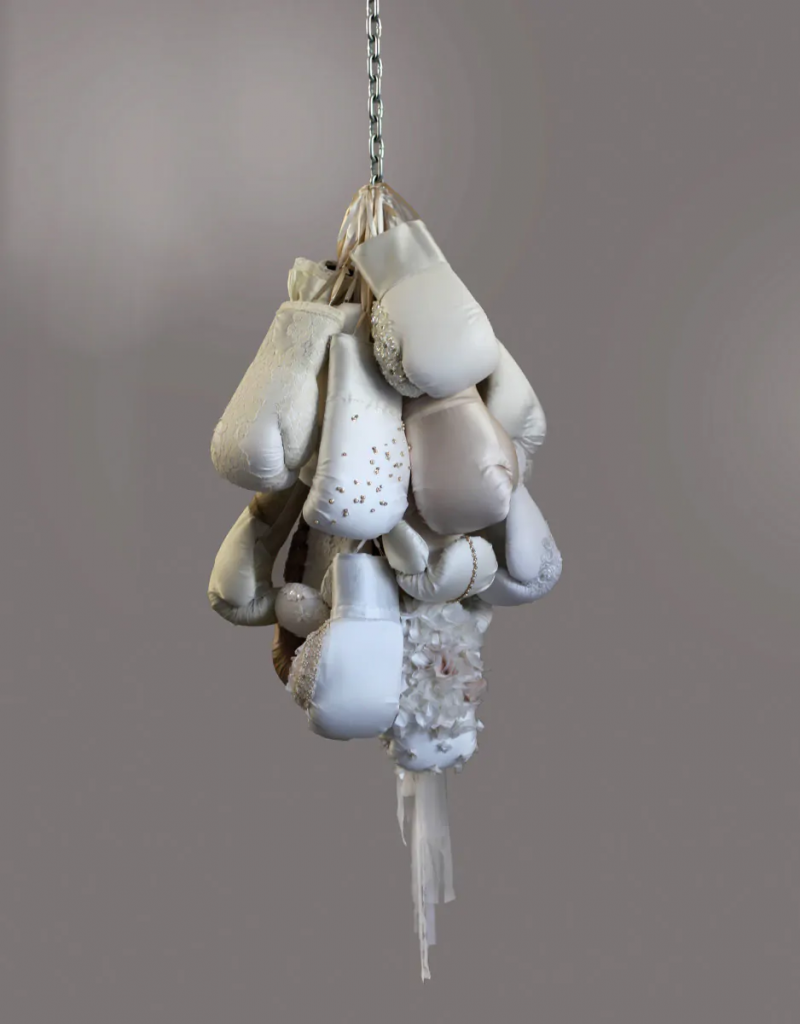
Zoe Buckman, She Dwells with Beauty (2016). Courtesy of Gavlak.
The Women’s March and #MeToo movement defined 2017, trickling into Miami Beach in the form of pink pussy hats and dealers suddenly touting their support of women artists. At the fair, The Box presented Judith Bernstein’s “Anthurium” paintings, reflecting an overdue interest in 1970s feminists previously maligned for their “blood and guts” imagery. On the other end of the spectrum, Buckman’s assemblages of boxing gloves reupholstered in vintage wedding dresses were instant viral sensations, offering social media uncomplicated symbols of girl power.
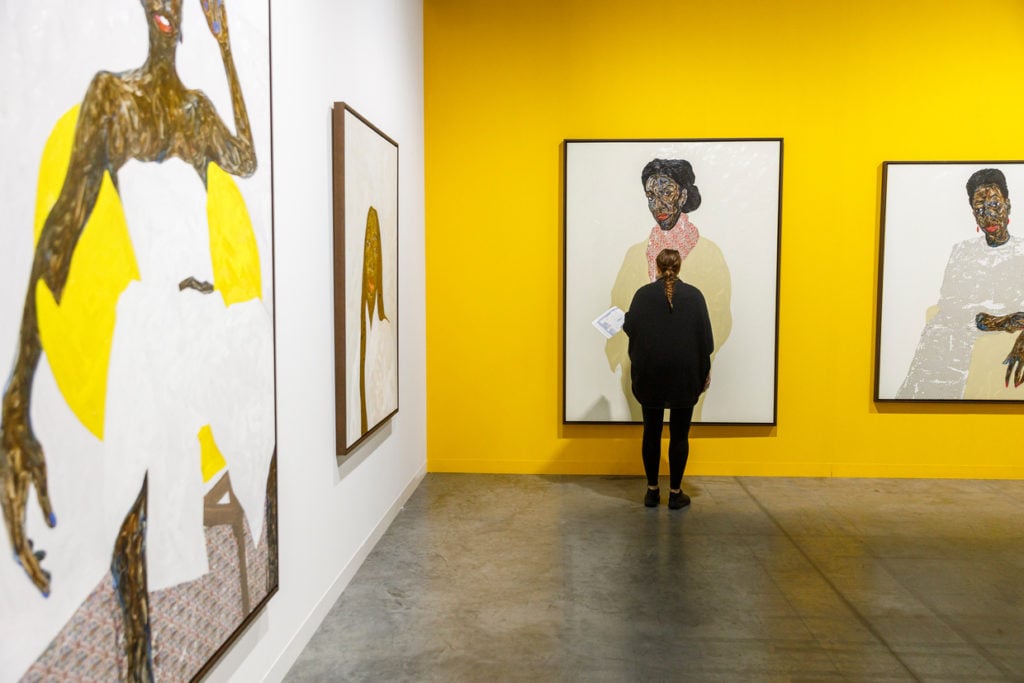
Mariane Ibrahim Gallery’s presentation of Amoako Boafo at Art Basel Miami Beach 2019. Photo: courtesy of Art Basel Miami Beach.
The Rubells, beloved Miami collectors and perennial market bellwethers, chose Boafo for their annual residency and corresponding solo exhibition in 2019, igniting a buying frenzy at Ibrahim’s booth at the fair; her solo presentation of the artist’s finger-painted portraits sold out in minutes. Three months later, Boafo would make headlines when his painting The Lemon Bathing Suit sold for $880,971 at Phillips—putting him at the center of a hurricane of opportunism and predatory flipping.
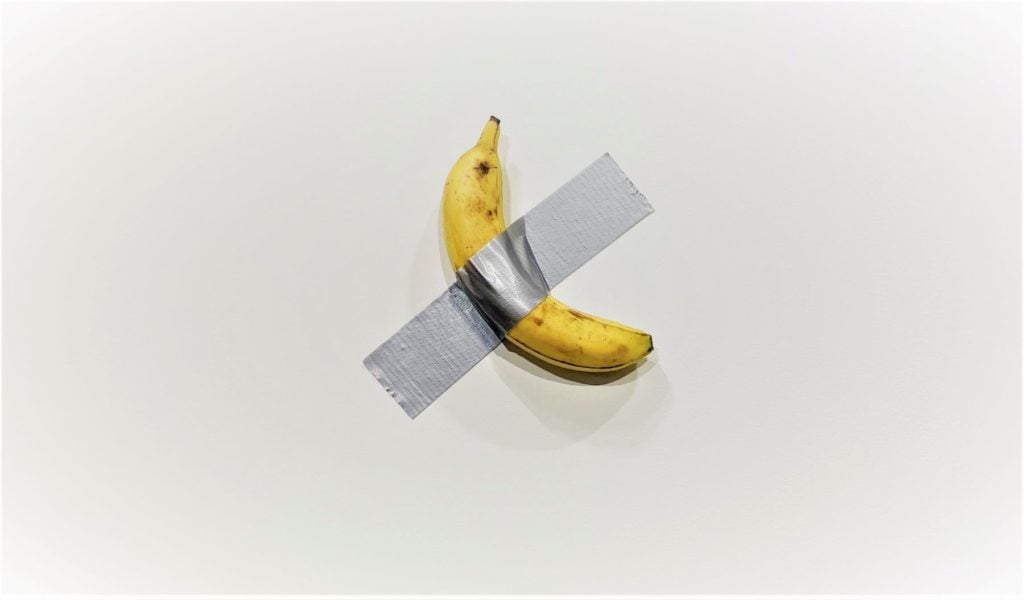
Maurizio Cattelan’s Comedian, for sale from Perrotin at Art Basel Miami Beach. Photo by Sarah Cascone.
This work hardly needs any introduction—it stands as one of the most dramatic crossovers between the art world and the real world in history. Just a year after Gavin Brown lamented the death of “cocky poetry” at art fairs, Cattelan duct-taped a banana to a wall. The edition of three sold twice for $120,000, then once more for $150,000. Immediately, “the banana” dominated headlines, effectively breaking the Internet. For many, it symbolized the baffling excesses of the rich, inspiring both protest and endless parody. But for many of us, it was a delightful inside joke: Comedian mocked the absurdity of our industry by profiting handsomely from it. In terms of cultural impact, virality, and sheer brilliance, the piece remains unmatched.